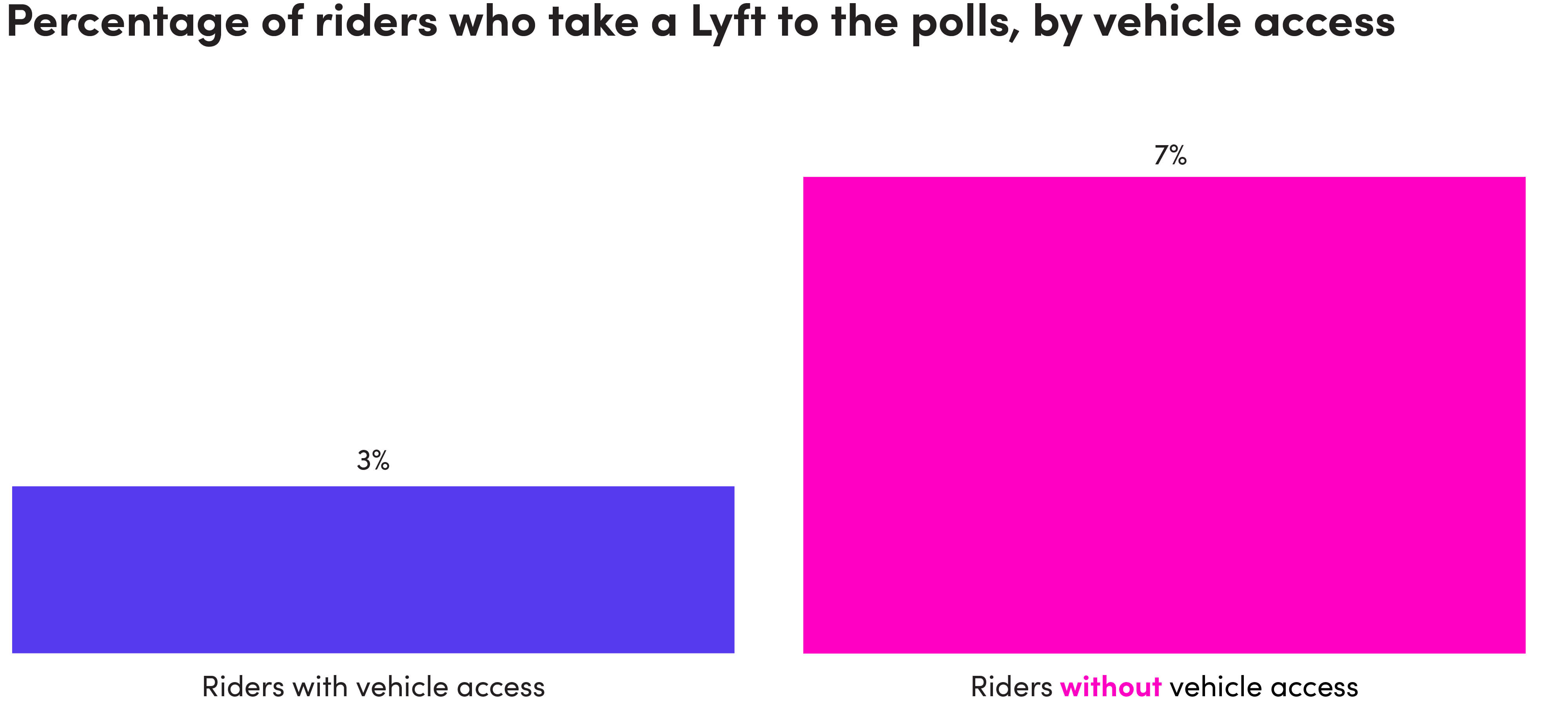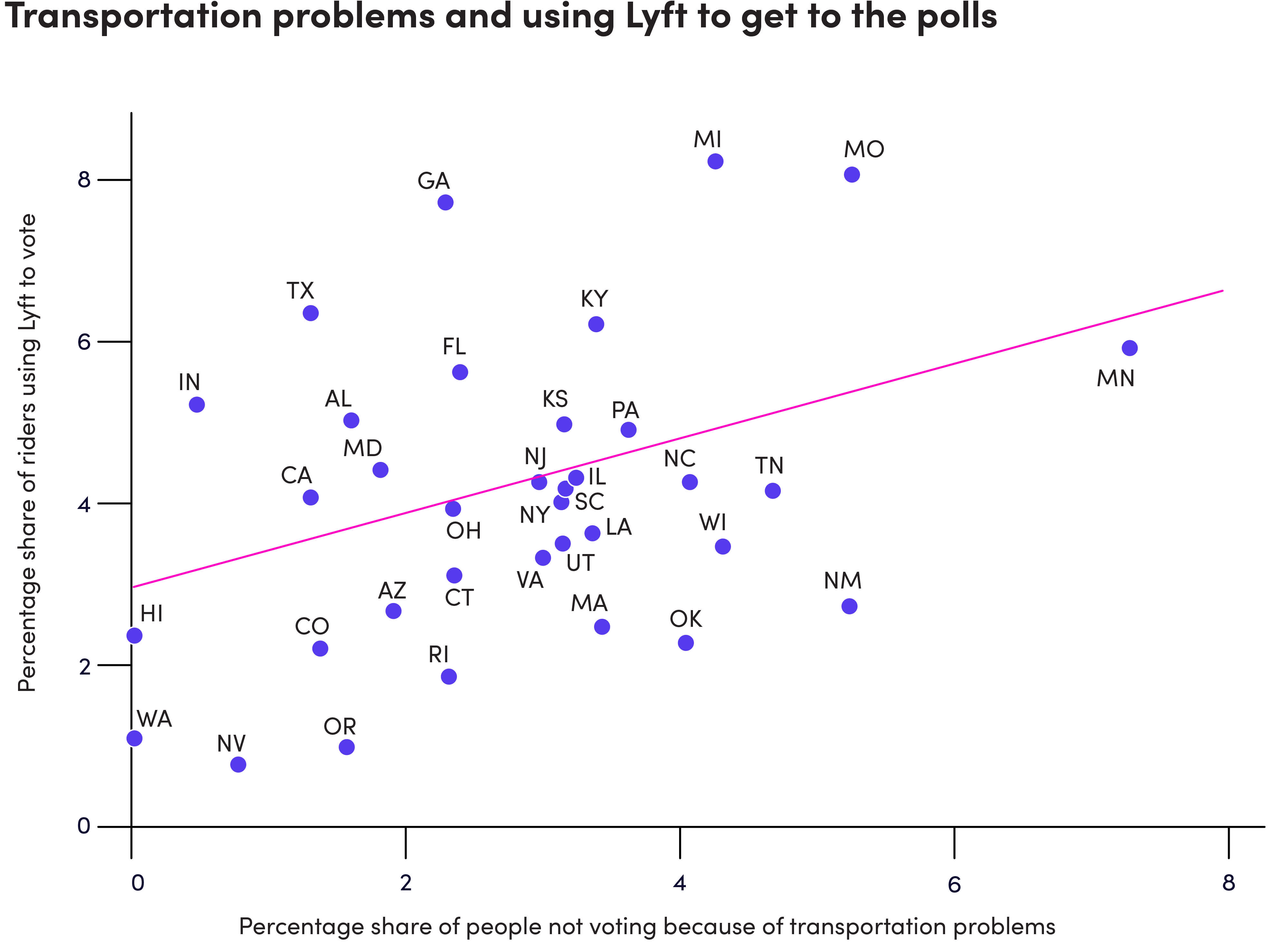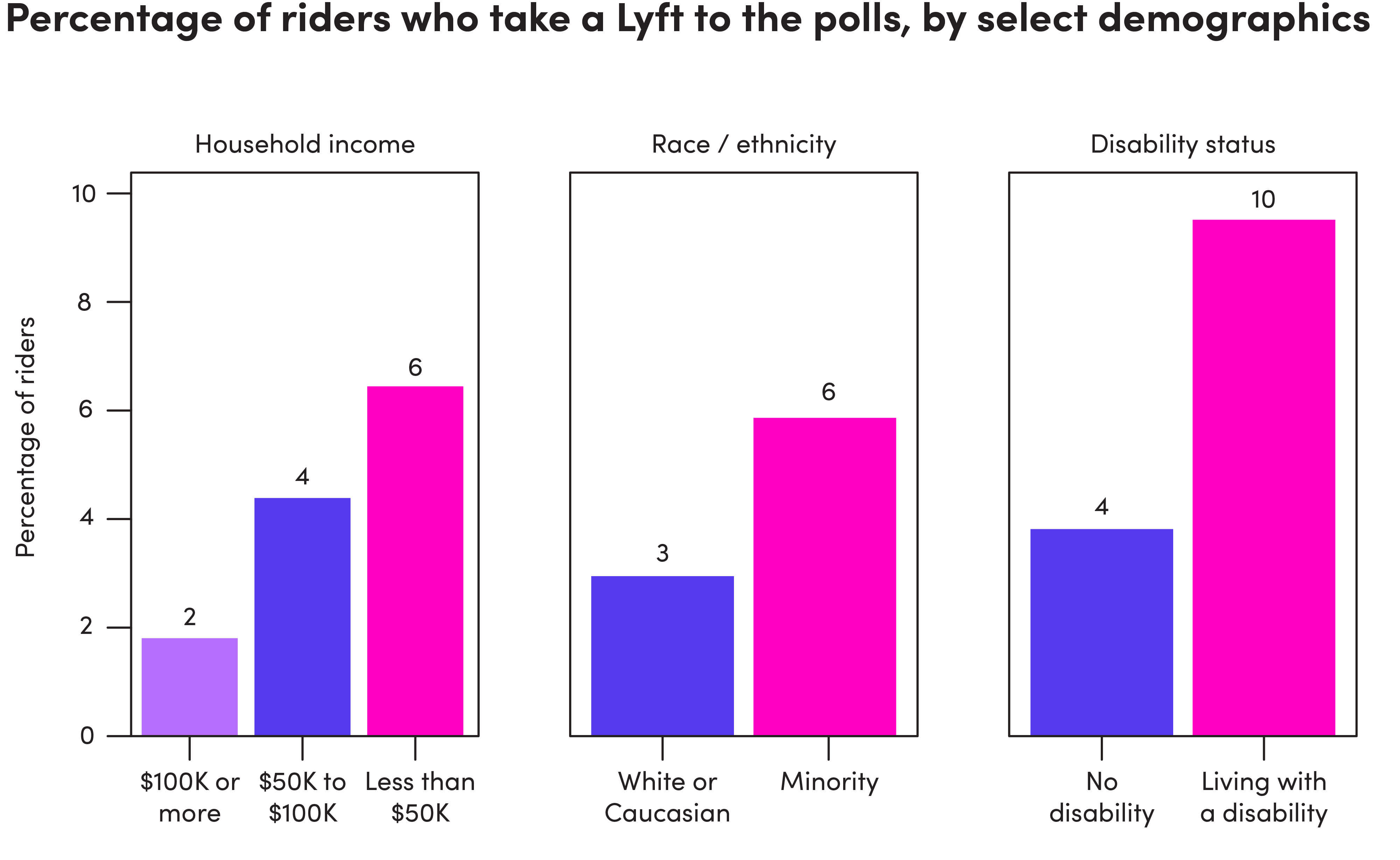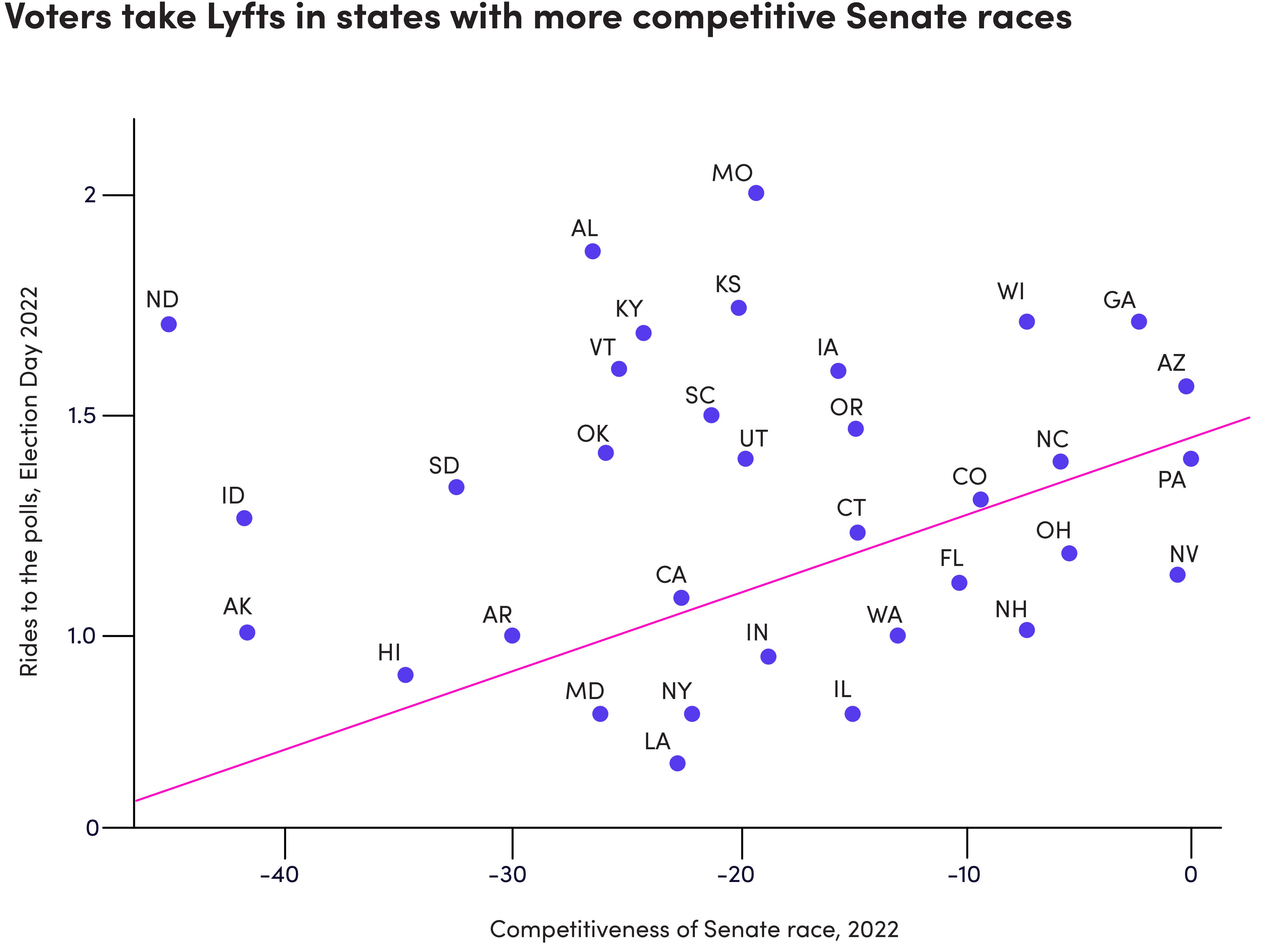
Election Day is approaching, and, if past years are any guide, many voters will use rideshare to cast their ballots. That’s especially true for populations with low turnout rates or who face challenges getting to the polls. Here’s what we found when we analyzed rideshare data on and around previous election days.
Rideshare gets voters to the polls
The data is clear: Rideshare is an important way voters get to the polls. A recent survey found that nearly 3 million Lyft riders have used Lyft to go to the polls, drop off a ballot, or register to vote. In 2020, the only presidential election for which data is available, there were 10% more Lyft rides on Election Day than on an average fall Tuesday. And while these figures may have been impacted by the Covid epidemic, the midyear election of 2022 also drove notable ride activity, with a 20% increase in first-time rides to poll-like locations (i.e., libraries, schools, and civic and religious buildings) on Election Day.

Rideshare helps voters overcome transportation barriers
Transportation access can have a major impact on voting behavior. Nearly half of eligible voters didn’t cast a ballot in 2020, and more than 780,000 directly cited “transportation problems” as their primary obstacle in 2022. Moreover, other transportation-related factors — like inconvenient polling places, bad weather, or the time it takes to vote — are cited as obstacles by over 40% of non-voters. And a 2021 study estimates that owning a car can increase a person’s likelihood of voting by at least a third.
Rideshare helps close that gap. Based on survey data from Lyft’s 2024 Economic Impact Report, Lyft estimates that riders without access to a private vehicle are more than twice as likely to use Lyft to get to the polls than those with vehicle access.

Lyft data also suggests a correlation at the state level. States whose respondents were most likely to identify “transportation problems” as the main reason they did not vote — like Minnesota, Missouri, and Michigan — were some of the states with the largest percentage of Lyft riders who used the service to go to the polls in 2022.

Taking rideshare to the polls is more common among populations with low turnout rates
Minorities and low-income individuals are less likely to turn out to vote, facing obstacles along the voting pipeline from language barriers to inflexible work schedules. Likewise, people with disabilities who are registered to vote are twice as likely to cite “transportation problems” as the reason they didn’t vote.
All three of these populations are more likely to use rideshare to get to the polls. According to Lyft’s 2024 Economic Impact Report, lower-income Lyft riders were three times more likely to use rideshare to get to the polls than higher-income riders. Similarly, non-white riders were twice as likely as white riders, and riders with disabilities were 2.5 times more likely than those without a disability.

The closer the race, the greater rideshare’s role
Lyft data also suggests that the more competitive a race, the more voters use rideshare. In 2022, there was a statistically significant correlation between a race’s competitiveness (as measured by 538’s pre-election polling) and the percentage increase in first-time rides to likely polling locations. Georgia, in particular, had one of the most competitive Senate races last year (the difference in November was about 35,000 votes) and saw one of the largest upticks in rides to the polls.

With the 2024 election just around the corner, we urge you to make a plan to vote if you haven’t already. Lyft is also providing discounted rides to the polls: Use the code VOTE24.
Data sources and definitions
Lyft data
E-Day bump: The percent increase in the number of first-time rides to poll-like locations (libraries, schools, civic and religious buildings) relative to other Tuesdays in October and November 2022.
Census voting data (2022 report)
Primary reason for not voting: Asked of those who did not participate in the 2022 election.
Rider Demographics (2024 Economic Impact Report)
Voting use-case: Lyft riders who report taking a Lyft ride to drop off a ballot or go to a polling location.
Vehicle access: Lyft riders who report owning, leasing, or having regular access to a vehicle.
Household income: Approximate annual household income before taxes, as reported by Lyft riders.
Race / ethnicity: Lyft riders who report they are members of a community of color.
Disability: Lyft riders who report living with a disability.
Election forecasts (538)
Competitiveness of Senate race: Inverse of the expected margin of victory for 2022 Senate races, as of November 8, 2022.


